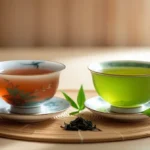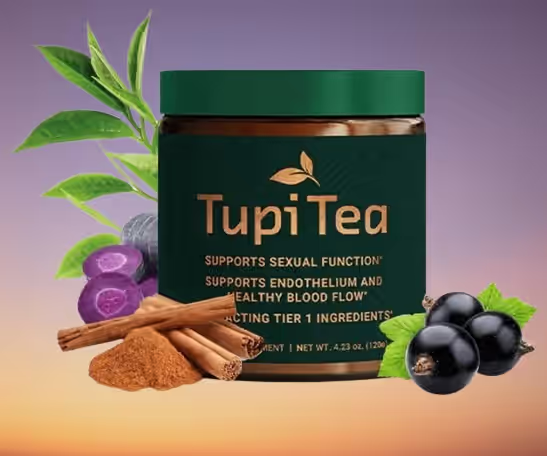Table of Contents
So, you’re trying to figure out oolong vs green tea—which one is better for you? It’s a common question, and honestly, both are pretty good. They both have cool flavors and some nice health stuff going on. We’ll break down the differences and help you decide which one might be your new favorite go-to drink. It’s all about what you like and what works for your body.
Key Takeaways
- Oolong tea and green tea both come from the same plant, but they’re processed differently.
- Oolong tea goes through partial oxidation, which gives it a wide range of flavors.
- Green tea is minimally processed, keeping its fresh, sometimes grassy taste.
- Both teas have good stuff for your health, like antioxidants.
- The best tea for you depends on your taste and if you’re sensitive to caffeine.
Understanding Oolong Tea
What Defines Oolong Tea?
Oolong tea is a true tea, meaning it comes from the leaves of the Camellia sinensis plant. It’s super popular in Asia, and it’s in the same family as green, white, black, and pu-erh teas. You’ll mostly find it grown in Taiwan and the Fujian province of China, where they call it “wulong tea” or “black dragon tea.” The leaves get dried in the sun, oxidized, and then twisted into cool shapes like long spindles or tiny beads.
Cultivation and Processing of Oolong
Oolong tea’s processing is really what sets it apart. It’s partially oxidized, and the level of oxidation makes a huge difference in the final flavor. The oxidation can range anywhere from 8% to 85%. It’s a bit of an art form, and skilled tea makers know exactly how to coax out the right flavors. The leaves are often rubbed repeatedly to get the texture and flavor just right.
Flavor Profiles of Oolong Tea
The taste of oolong tea can vary a lot. Some oolongs are fruity and sweet, with a honey-like aroma. Others are more earthy and woodsy, with a roasted scent. It really depends on how much the tea leaves were oxidized. Oolong teas contain caffeine, but the amount can change based on where it’s grown and how it’s processed. Usually, oolong has more caffeine than green tea.
Drinking tea is a big part of the culture in Asian countries. Friends and business partners often meet over tea. It’s a social thing, and it’s been going on for a long time.
Here’s a quick look at how oxidation affects flavor:
| Oxidation Level | Flavor Profile |
|---|---|
| Low (8-20%) | Light, floral, sweet |
| Medium (20-50%) | Fruity, honey-like |
| High (50-85%) | Roasted, woodsy, earthy |
👉 Don’t Miss This Limited-Edition Oolong Tea 👈
Understanding Green Tea
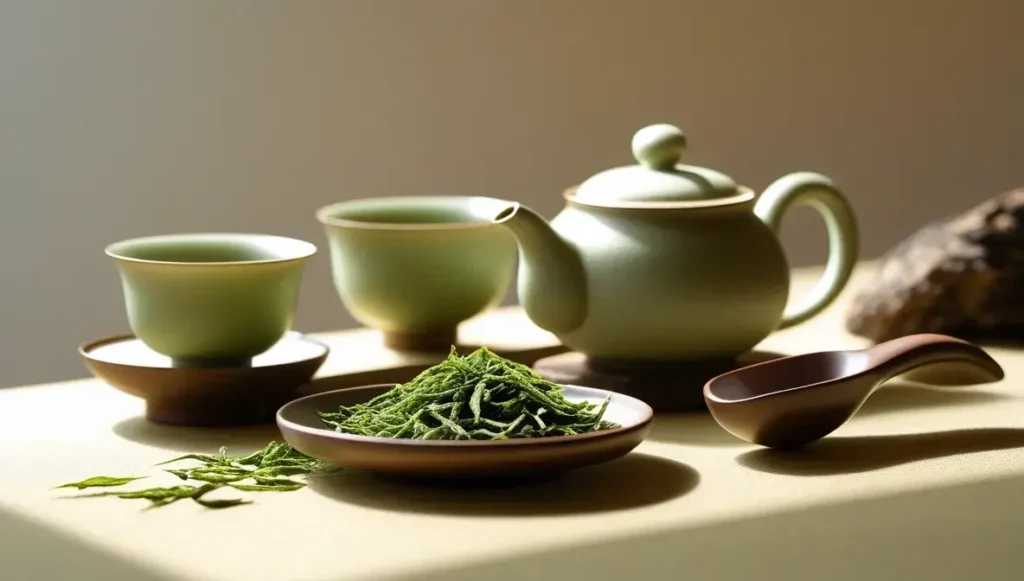
The Essence of Green Tea
Green tea, celebrated across the globe, is more than just a beverage; it’s a cultural icon and a health booster. What sets green tea apart is its minimal processing, which allows it to retain a high concentration of antioxidants and other beneficial compounds. Camellia sinensis is the plant from which it originates, just like oolong and black tea. It’s often considered the healthiest tea type due to its rich nutrient profile and associated green tea health benefits.
Processing Methods for Green Tea
Unlike oolong, green tea leaves bypass the oxidation process. Here’s a quick rundown of common methods:
- Steaming: A popular Japanese method, it preserves the tea’s vibrant green color and fresh flavor.
- Pan-Firing: Common in China, this method involves heating the leaves in a wok to halt oxidation.
- Sun-drying: A more traditional approach, allowing the leaves to dry naturally under the sun.
These methods ensure that the leaves retain their natural goodness, contributing to the green tea health benefits.
Regional Flavor Variations
Just as with wine, the terroir significantly impacts the flavor of green tea. Different regions produce distinct varieties:
- Japanese Green Tea: Often characterized by grassy, vegetal notes and a smooth, umami flavor. Sencha and Matcha are popular examples.
- Chinese Green Tea: Tends to have a more roasted or nutty flavor profile. Gunpowder and Dragon Well are well-known varieties.
- Korean Green Tea: Offers a balanced flavor, often with a hint of sweetness and a refreshing finish.
The subtle differences in flavor make exploring green tea a delightful journey for any tea enthusiast. Each region brings something unique to the cup, reflecting its climate, soil, and processing traditions.
👉 Unlock the Power of This Top-Rated Green Tea 👈
Oolong vs. Green Tea: Health Benefits Compared
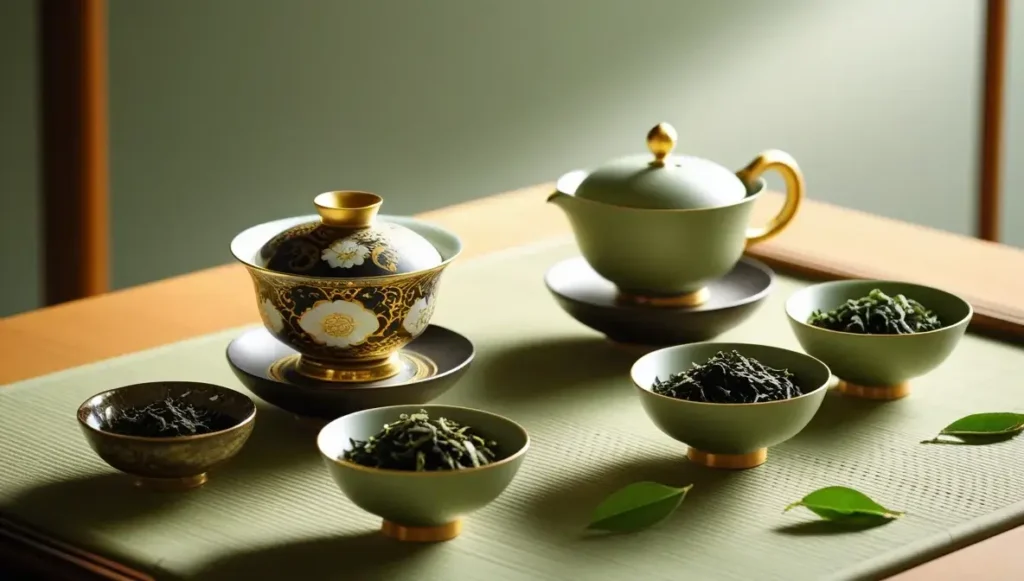
Antioxidant Content in Oolong and Green Tea
Both oolong and green tea are celebrated for their antioxidant properties, but the concentration can differ. Green tea often boasts a higher amount of certain catechins, like EGCG, which are powerful antioxidants. However, oolong tea, due to its unique processing, develops other beneficial compounds. The health benefits of oolong vs green tea are closely linked to these antioxidants, which combat free radicals and reduce oxidative stress.
Impact on Metabolism and Weight Management
When it comes to oolong vs green tea for weight loss, both teas have shown promise. Green tea is frequently associated with boosting metabolism, but oolong tea also plays a role. Studies suggest that regular oolong consumption can increase metabolism and fat oxidation. So, which tea is better for health in this regard? It might depend on individual responses and preferences.
Cardiovascular Health Advantages
Both oolong and green tea contribute to cardiovascular health. The antioxidants in these teas can help lower blood pressure and improve cholesterol levels. Regular consumption is linked to a reduced risk of heart disease. The oolong tea benefits vs green tea in this area are significant, making both excellent choices for heart health.
Drinking either oolong or green tea can be a simple way to support your heart and overall well-being. The key is consistency and incorporating it into a balanced lifestyle.
Caffeine Content in Oolong vs. Green Tea
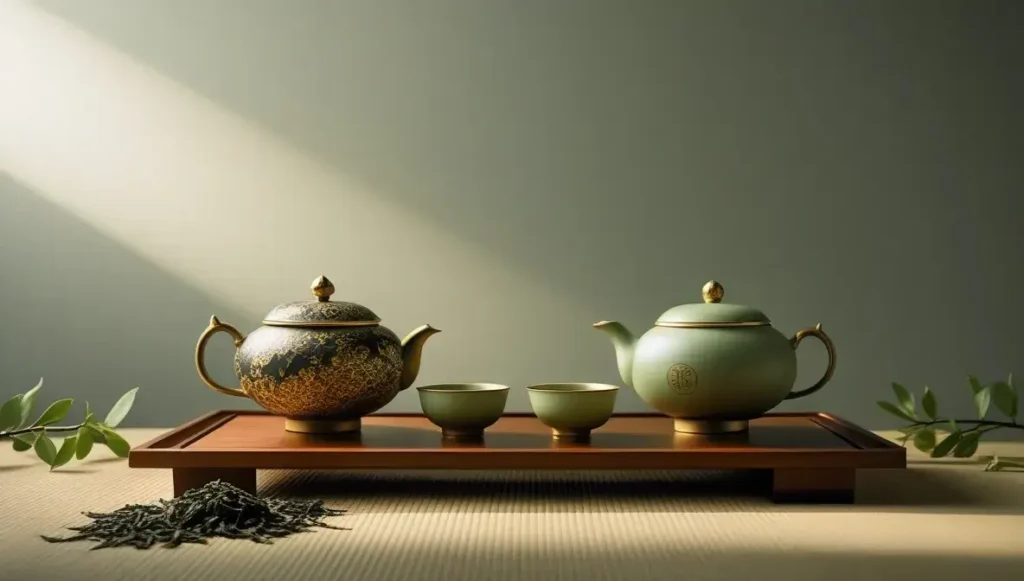
Caffeine Levels in Oolong Tea
Oolong tea, known for its diverse flavor profiles, also presents a range in caffeine content. The caffeine levels can vary quite a bit depending on factors like the specific cultivar, processing method, and brewing technique. Generally, oolong tea tends to have a moderate caffeine level, often higher than green tea but lower than black tea.
Caffeine Levels in Green Tea
Green tea is often chosen by those seeking a gentler caffeine experience. The caffeine content in green tea is typically lower compared to oolong tea. However, it’s not a universal rule, as some types of green tea, especially those made from younger leaves or prepared in a concentrated manner, can pack a surprising caffeine punch.
Choosing Based on Caffeine Sensitivity
When deciding between oolong tea vs green tea caffeine, it’s important to consider your personal sensitivity. If you’re sensitive to caffeine, green tea might be the better option. However, if you enjoy a more stimulating beverage, oolong tea could be a good fit. Always pay attention to how your body responds and adjust your consumption accordingly. Here’s a quick comparison:
- Green Tea: Generally lower caffeine, good for those sensitive to stimulants.
- Oolong Tea: Moderate caffeine, a middle ground between green and black teas.
- Individual Variation: Caffeine content can vary widely based on tea type and preparation.
It’s worth noting that the perceived effect of caffeine can also be influenced by other compounds in tea, such as L-theanine, which promotes relaxation and can modulate the stimulating effects of caffeine. This means that even if two teas have similar caffeine levels, their overall impact on alertness and focus can differ.
👉 Grab the Best-Selling Oolong Tea Before It’s Gone 👈
Taste and Processing Differences
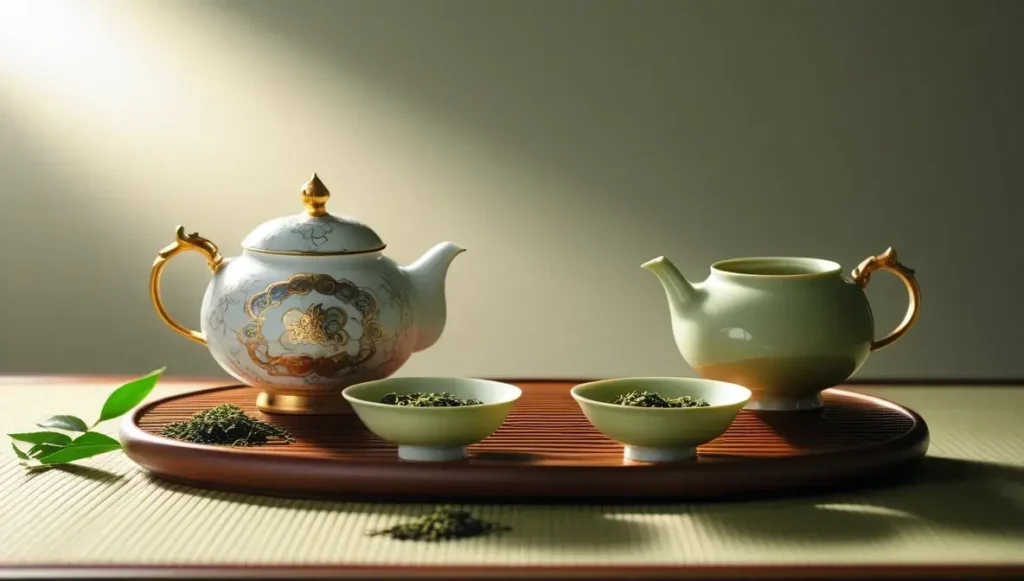
Oxidation Levels and Flavor Development
Oolong and green tea, while both derived from the Camellia sinensis plant, diverge significantly in their taste profiles due to differences in processing, specifically the level of oxidation. Oolong tea undergoes partial oxidation, a process that allows for a wide spectrum of flavors to develop, ranging from light and floral to rich and roasted. Green tea, on the other hand, is not oxidized, preserving its fresh, vegetal character.
The Art of Oolong Tea Processing
The processing of oolong tea is a complex and meticulous art. It involves several stages, including withering, rolling, oxidation, and firing. The oxidation level, which can range from 8% to 85%, is carefully controlled by tea masters to achieve the desired flavor. This level of control allows for a diverse range of oolong varieties, each with its unique taste and aroma. The leaves are often repeatedly rubbed to generate the correct texture and flavor.
Green Tea’s Minimal Processing
Green tea processing aims to preserve the natural green color and fresh flavor of the tea leaves. After harvesting, the leaves are quickly heated through steaming or pan-firing to prevent oxidation. This minimal processing results in a tea that is light, grassy, and slightly astringent. The flavors can differ from region to region; with more grassy-flavored green teas coming from Japan, peachy and chocolaty teas from China and gunpowder flavors coming from Taiwan.
The differences in processing between oolong and green tea highlight the impact of oxidation on flavor development. Oolong’s partial oxidation creates a complex and nuanced taste, while green tea’s lack of oxidation preserves its fresh and vegetal character. This is why oolong teas can be fruity and nutty or earthy and woodsy, while green tea is much more vegetal when it comes to flavor.
Historical Origins of Oolong and Green Tea

The Discovery of Oolong Tea
The story of oolong tea’s origin is pretty interesting. It’s said that during the Ming Dynasty, monks hanging out on Songluo Mountain in Anhui, China, stumbled upon a new way to make tea. They let the tea leaves oxidize a bit before pan-firing them, which gave the tea a darker color and a more fragrant flavor. This new tea quickly became popular, and Emperor Hongwu even declared it an Imperial tea. Now, it’s one of the most loved Chinese teas around the world.
The Ancient Roots of Green Tea
Green tea has a seriously long history. Legend has it that Emperor Shen Nong, who’s seen as the father of agriculture and medicine in Chinese mythology, discovered green tea way back in 2737 BC. The story goes that he was chilling outside with his crew, and some tea leaves blew into his cup of hot water. He didn’t notice the color change, took a sip, and was blown away by the flavor and how refreshing it was. Green tea then became a favorite of the imperial court, and its popularity spread globally.
Imperial Preferences and Global Spread
Both oolong and green tea owe a lot to imperial preferences. The emperors of China played a big role in popularizing these teas. Once the higher ups started drinking it, everyone else wanted to as well. Over time, these teas made their way across borders, becoming staples in different cultures. Today, you can find variations of both oolong and green tea all over the world, each adapted to local tastes and traditions. It’s pretty cool how something that started as a local discovery turned into a global phenomenon.
👉 Refresh Your Routine with Elite Green Tea 👈
Making Your Choice: Oolong vs. Green Tea
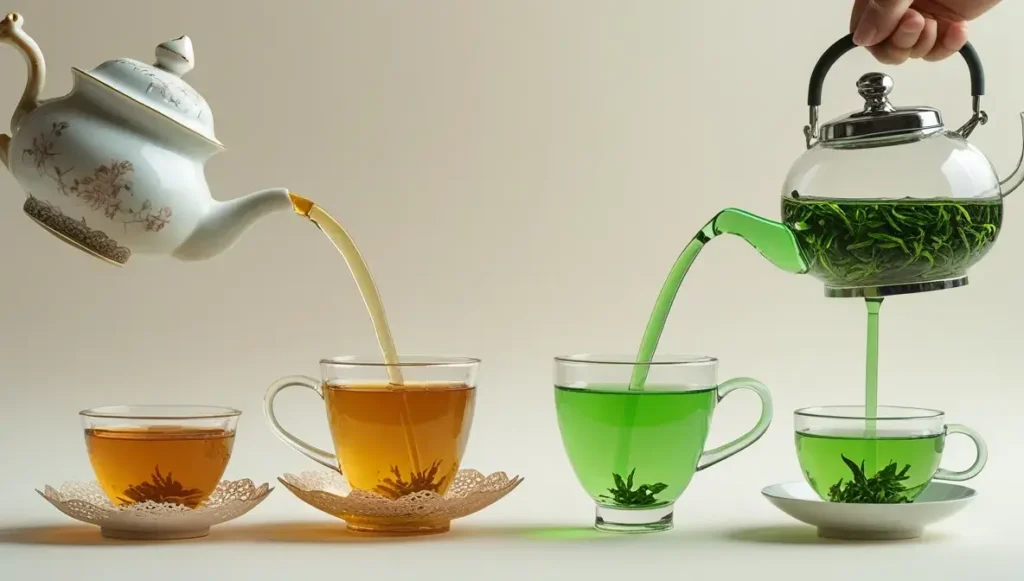
Personal Preference in Tea Selection
Ultimately, the choice between oolong and green tea boils down to personal taste. There’s no single “best” tea; it’s about what you enjoy drinking. Consider what flavors appeal to you. Do you prefer the grassy, vegetal notes of green tea, or the more complex, sometimes fruity or roasted flavors of oolong? Experimenting with different varieties is the best way to discover your favorite.
Maximizing Health Benefits from Tea
To really get the most health benefits from either tea, consider these points:
- Brewing Time: Longer steeping times generally extract more antioxidants.
- Water Temperature: Use the correct water temperature to avoid burning the leaves and affecting the flavor and nutrient content.
- Tea Quality: Opt for loose leaf tea over tea bags when possible, as it often contains higher quality leaves and more antioxidants.
Drinking tea is a great way to add antioxidants to your diet. Both green and oolong teas offer unique health advantages, so incorporating both into your routine could be a good strategy.
Potential Side Effects and Consumption Guidelines
Both oolong and green tea contain caffeine, so be mindful of your intake, especially if you’re sensitive to stimulants. Oolong tea vs green tea taste is a big factor, but also consider the caffeine levels. Also, excessive consumption of any tea can interfere with iron absorption, so it’s best to drink tea between meals rather than with them. Moderation is key to enjoying the benefits without experiencing negative side effects.
Oolong vs Green Tea: Which One Is Best for You?
So, when it comes to oolong tea versus green tea, both are good for you. They both have nice flavors. Oolong tea has more of those good things called antioxidants, which means it might be a bit better for your health. But green tea has less caffeine. That makes it a good pick if you’re trying to cut back on caffeine. Really, it just comes down to what you like. Some people like the earthy taste of green tea. Others like the nutty taste of oolong. You can try both and see what you think. Either way, you’re getting some good stuff for your body.
👉 Try the Oolong Tea That’s Taking Over Wellness Routines 👈
Frequently Asked Questions
What makes oolong tea different from other teas?
Oolong tea gets its unique taste and look from a special process called partial oxidation. This means the tea leaves are allowed to react with air for a little while after they’re picked, but not as much as black tea. This gives oolong a wide range of flavors, from light and flowery to rich and toasty.
Why is green tea considered healthy?
Green tea is known for being packed with good stuff called antioxidants, especially catechins. These help protect your body’s cells and can be good for your heart and brain. It’s also often linked to helping with weight management and keeping blood sugar levels steady.
Is oolong tea healthier than green tea, or vice versa?
Both teas are good for you, but they offer slightly different benefits. Green tea generally has more antioxidants. However, oolong tea has been shown to help with metabolism and burning fat. The best choice depends on what health benefits you’re looking for.
Which tea has more caffeine, oolong or green?
Generally, oolong tea has a bit more caffeine than most green teas, but it can vary a lot depending on how the tea was grown and processed. If you’re sensitive to caffeine, green tea might be a better choice for you.
How do the tastes of oolong and green tea compare?
Oolong tea goes through a process where the leaves are partially oxidized, which gives it a range of flavors from fruity to nutty. Green tea, on the other hand, is barely processed and not oxidized, so it keeps a fresher, sometimes grassier, taste.
Where did oolong and green tea come from?
Both teas have been around for a very long time in Asia. Green tea is said to have been discovered by a Chinese emperor thousands of years ago. Oolong tea came later, during the Ming dynasty, when monks found that partially oxidizing tea leaves created a new, delicious kind of tea.
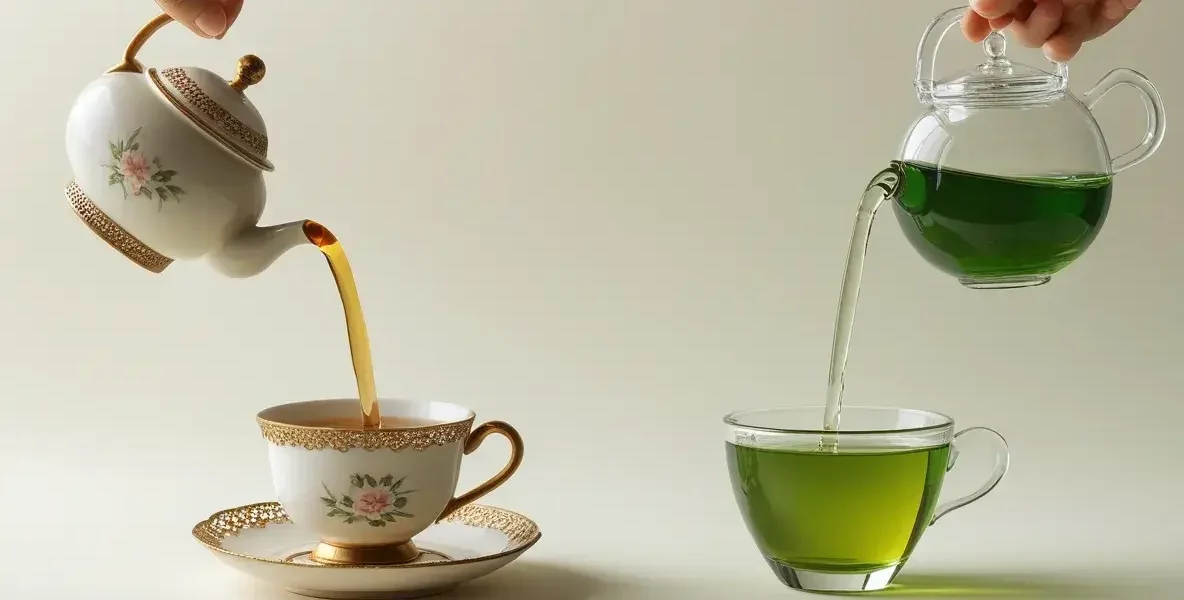

![Jasmine Tea vs Green Tea Benefits: Which Gives Better Health Results? [2025] jasmine tea vs green tea benefits](https://www.goteaworld.com/wp-content/uploads/2025/09/jasmine-tea-vs-green-tea-benefits-150x150.webp)







